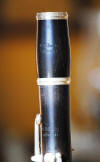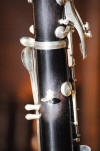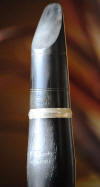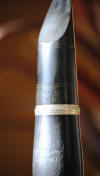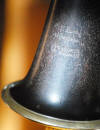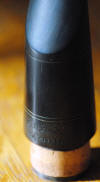Alexandre Clarinets –
Barbier Clarinets – G
Bundy Clarinets
Alexandre Clarinets were from Henri Selmer’s Brother
Alexandre. (in summary from the old Selmer Paris website – info no
longer on the new one) Alexandre departed to the US in 1885 and was solo clarinetist for several
of America’s biggest Orchestras (Boston Symphony Orchestra, Cincinnati
Symphony, and New York Philharmonic Orchestra). He also struck out on his own and started
manufacturing Alexandre clarinets in the US.
He started the Selmer USA company in 1904 and then started importing
his brother’s, Henri Selmer, instruments to the US. George Bundy, a former student, was
hired to manage the company.
When Henri desperately needed assistance in producing clarinets Alexandre
went back to France in 1910 and opened the Gazillion factory. For a short period he produced Alexandre
clarinets in France. These clarinets are stamped “made in france”
the US ones I believe had no marking of origin.
He then abandoned clarinet manufacture after helping his brother get his
clarinet design “corrected”. George Bundy at one time sold
wood Bundy clarinets, which were from one of the Alexandre (Selmer Paris) plants and not the
specific Selmer Paris plant as some suggest.
You could say the Alexandre clarinets
were Selmer Paris prototype clarinets. BUT they are not. Alexandre
Selmer is a Selmer, but not a Henri Selmer and then Alexandre did design the
new Henri Selmer clarinets which of course resemble his clarinets.
Confusing” basically in Paris there was Henri Selmer Paris, Alexander
Selmer Paris (factories) and Barbier at one time. The two Selmer factories, being
Selmer (Henri & Alexandre).
Alexandre used to travel alot giving Master Classes in the
US and Europe. But due to the “Henri Selmer” lineage his history is
somewhat obscured and forgotten.
SN 726x – manufactured 1926-1927
NOTE: There are Alexandre saxophones but those are Italian
made and no relation to Selmer
In 1927 George Bundy buys his store from the Selmers and
becomes the sole distributor of the Henri Selmer Paris instruments. He
names his company “H & A Selmer Inc.” H&A probably standing for Henri
& Alexandre. H&A is seen on vintage Selmer USA saxophones too.
Below is an earlier Alexandre. throat keys are on
separate posts but no throat adjusting screw and no trill guide





Paris model, unknown serial number
Paris model sn 1492
Paris model serial number 6669
Barbier
Clarinets
One of the quick identifiers of a Barbier is the trill key guide is only on
the top trill key (most guide the top two trill keys)
while some of them may not have a trill key guide

The later Barbier, Paris made clarinets were supposedly SML stencils
But the late Barbier clarinets were made in Elkhart Indiana and resembled
the early Signets. Selmer Paris basically exited from the student
level instruments to concentrate on professional only instruments, as they
had Selmer USA now who moved to larger manufacturing capability in Elkhart
from New York.
G Bundy Clarinets
For more G Bundy go to this page – click
here.
This particular G Bundy clarinet has “Sponsored by Selmer” on
it.
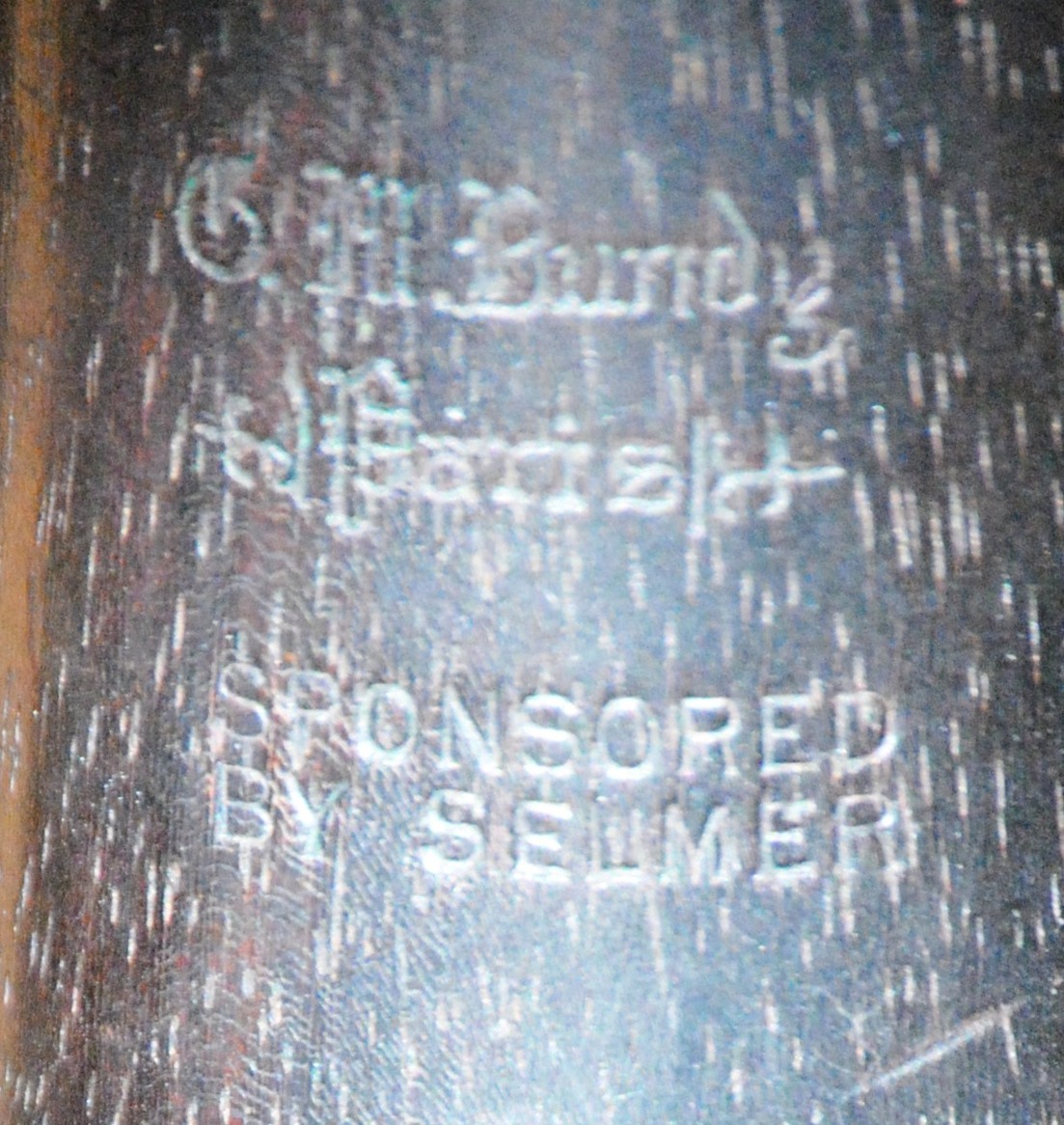
Taken from the Selmer Paris website 1/2010 (their old website had much more
information which was not carried over to this version, thus copying for
some record)
-
(1904) The Selmer Paris clarinets are presented for the first time at
the International Saint Louis Fair (USA), where Henri wins a Gold Medal. -
(1904) At this period, Alexandre Selmer, Henri’s brother, has been first
clarinetist in the Cincinnati Symphony Orchestra for two eyars. From 1903,
he plays the clarinets his brother is manufacturing in France. This will
strongly contribute to the development of their sales in the US. -
(1905) Paul Lefevre and his son Henri, who had been working for Maison
Robert (a clarinet manufacturer), join Henri Selmer’s team. -
(1905) Henri takes over the Barbier Company (a flute manufacturer, rue du
faubourg Saint Denis, in Paris). -
(1905) The following year, Alexandre officially establishes himself in New
York USA, where he starts selling the Selmer Paris clarinets. This
first structure will later become the H&A Selmer (USA) company. -
(1908) Selmer factory has 20 workmen and apprentices.
-
(1910) presentation of the first Selmer catalogue
-
(1910) Alexandre, after having opened his first shop in the United States,
decides to return to France, entrusting the management to one of his
students, George Bundy. -
(1912) Opening of the Gaillon factory (Euro), which employs around 40
workers -
(1912) The following year the Paris workshop is expanded and the
manufacturing means restructured. -
(1919) Opening of a new factory in Mantes whose technical direction is
headed by Maurice and Henre Lefevre, both son-in-laws of Henri Selmer.
Other saxophone manufacturers, like Dolnet and Evette-Schaeffer, are already
established in this city. -
(1928) Creation of Selmer Canada
-
(1929) Creation of Selmer London
-
(1929) Purchase of Adolphe Sax workshops
-
(1931) Acquisition of Millereua – a brass manufacturer
-
(1932) Selmer branches out into guitar manufacture in partnership with
stringed-instrument maker Mario Maccaferri. -
(1933) Release of the “Armstrong” trumpet model later known as “Balanced”
and of the model Harry James. -
(1948) Marcel Mule officials becomes the saxophone tester
-
(1949) purchases the Mytha street building where the Adoplphe Sax workshops
were previously. Three new floors where built to increase the brass workshop
space. -
(1953) Alexandre Selmer passes away
-
(1964) microphone specifically released for amplifications of woodwinds
-
(1975) Release of the Marchi system clarinet in collaboration with Joseph
Marchi.. This brought the addition of a 17th key and improved pitch
and sound in high and top registers and extended the range of the Boehm
system clarinet in Bb by an extra octave, thereby preparing it for the
contemporary repertoire. -
[Clarinets]
[Mouthpieces] [Repair]
[Trial Policy] [Scales, etc.]










